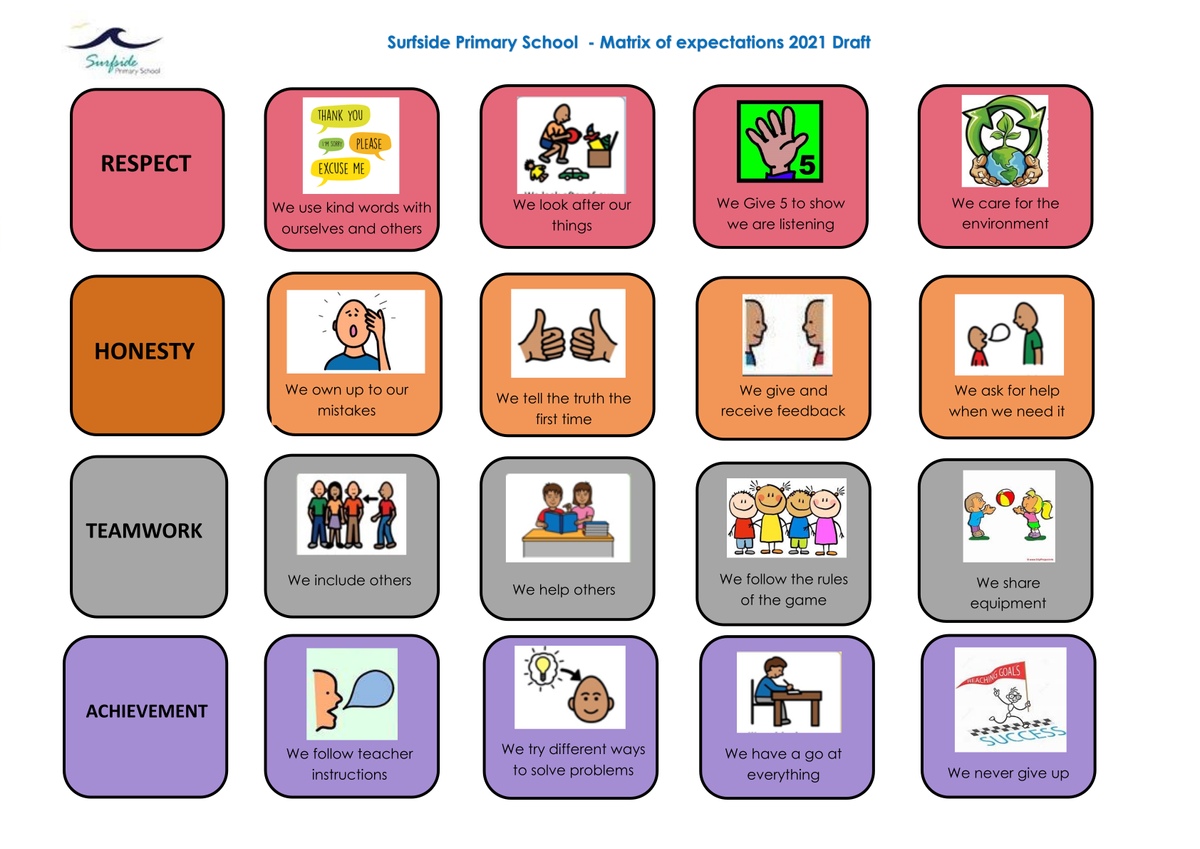Mental Health & Wellbeing Page

How do we manage behaviour?
This would have to be one of the most frequently asked questions. As a school we have been a School Wide Positive Behaviour School for a few years. This training has provided a suite of evidence based practices for our school to adopt to create a culture where all children can learn and grown and all staff enjoy their work and celebrate the achievements of our school community.
When we clearly identify and teach our behaviour expectations in the classroom, playground and school environments we create the safe, predictable routines that make school fun, safe and more enjoyable.
What are behaviour expectations?
Behaviour expectations are broad goals for behaviour, or the general ways we would like students to act. They serve as guidelines for behaviour and apply to all students across all settings. Behaviour expectations should also apply to adults. Ideally, behaviour expectations should be developed for the entire school, providing a framework to help establish rules and guide students.
How are behaviour expectations and rules related?
Behaviour expectations are often broad concepts and somewhat abstract for many students. That is why we create rules. Rules help clarify how behaviour expectations are applied in different activities and contexts. Rules define the specific behaviours we want students to demonstrate. These behaviours should be concrete, observable, and measurable and can vary depending on the setting (e.g., classroom, canteen, sports field).
Creating a matrix help to plan and organise rules that reflect each behaviour expectation. In classroom settings, a matrix can clarify how behaviour expectations look in different situations. For example, being responsible might involve walking and going directly to the destination when entering and exiting the classroom. However, being responsible will look different during independent work time or whole group instruction
Why develop and teach behaviour expectations and rules?
Clear expectations for behaviour are the foundation of effective classroom management. Rules make it clear what behaviours help students act in ways consistent with our shared values.
Research shows that clarifying and teaching rules can decrease problem behaviour and increase student engagement:
• Increased structure helps students engage with instructional tasks (Brophy, 1998).
• Teaching rules and routines to students at the beginning of the year and enforcing them consistently increases student academic achievement and task engagement (Evertson & Emmer, 2008; Johnson, et al., 1996).
• Clearly stating expectations and consistently supporting them increases teacher credibility (Brophy & Good, 2000).
By clarifying, teaching and encouraging expected behaviour, teachers assist all students to achieve academic success and social competence
- You may notice that this matrix was first drafted in 2021. The values were the result of student, parent and staff collaboration originally. The matrix stays in draft mode as it is an active document that changes as the students achieve proficiency in each of the expectations.
Each newsletter we will continue to outline an element of our behaviour strategies at school.

